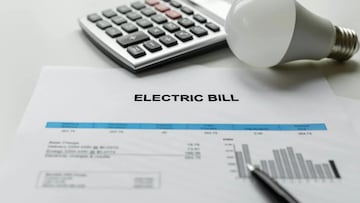How much will electricity bills go up this winter in the United States?
The National Energy Assistance Directors Association is predicting higher electric bills this winter. Here are the projections.

As the days become shorter and temperatures begin to drop, many may start thinking about how much their energy bills will be this winter.
In order to maintain warmth and comfort inside the home during the winter months, many are willing to invest in solutions that ensure the well-being of their families. However, this year, families will have to make some adjustments in their expenses in order to cover the costs of electricity, as the National Energy Assistance Directors Association (NEADA) of the United States predicts an increase in electricity bills for this winter.
The tropical Pacific is still neutral, but nature continues giving us signs that La Niña is on the way. Forecasters estimate a 71% chance that La Niña will emerge during Sep–Nov and expect it to persist through winter.
— NOAA Climate.gov (@NOAAClimate) September 12, 2024
Read more: https://t.co/VD3SB1ZlCK pic.twitter.com/KDprTUi9Wc
These increases are especially harmful for low-income families, as they mean that “home heating costs this winter will remain unaffordable for millions,” reports NEADA.
Overall, heating costs are expected to rise by a whopping 10.5 percent, as colder winters are forecasted for the Northeast and Midwest next year. Below are projections for how much your bills will increase, depending on the type of energy you use to heat your home.
How much will electricity bills go up this winter?
According to the Association, those who use electricity for home heating will be the hardest hit, seeing their bills rise by 13.6 percent, which translates to around $1,208 in dollar terms. NEADA credits the “continued high cost of maintaining and upgrading the grid and colder weather” for the sudden surge in energy bills.
Related stories
Prices for residents who use propane for heat are projected to rise 7.3 percent to $1,442. Those who use oil will see their bills increase by 6.1 percent to $1,963. Natural gas prices are holding steady but are expected to rise as winter approaches, although projections are not yet available. The US Energy Information Administration (EIA) will also publish a winter fuel forecast later this year, which households can watch for as it will also detail how their bills might compare to the prices paid last year.
The latest NOAA forecast for the 2024-25 winter season. pic.twitter.com/D1na6TaaFp
— OpenSnow (@OpenSnow) August 28, 2024
NEADA’s Executive Director Mark Wolfe said that his organization calls on state and federal governments to provide additional “support to the millions of families across the country who are struggling to keep up with monthly utility payments.” Wolfe added that in the longer term, public funds will need to be put towards ”weatherization and retrofits for low-income households” to prevent sudden and dramatic changes in a household’s energy bill year to year. A non-weatherized home not only leads to higher prices in the winter but in the summer, too, and as temperatures rise in the summer months, energy becomes more unaffordable year-round. Based on the current figures available to NEADA, the organization predicts that millions of households will fall behind on their utility bills as heating prices rise.
Complete your personal details to comment